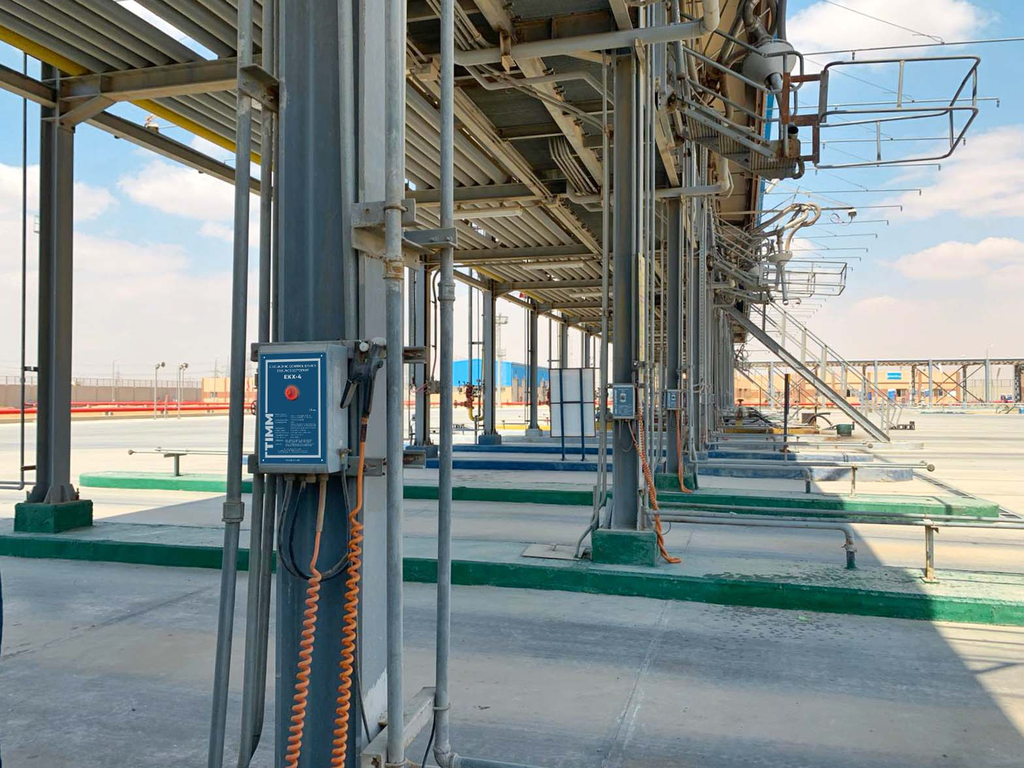How are the electrostatic hazards generated and how to prevent the danger effectively?
Background information
Over time, various accidents caused by ignition, were recorded during the loading of tank trucks. For example, over 250 accidents were recorded between 1960 and 1981 in the USA and Germany. The accident rate is reducing. These accidents are all related to static Electricity, or more precisely, uncontrolled electrostatic discharge. In many accidents, although measures against electrostatics were established, uncontrolled discharge was still found to be the ignition source, after investigation.
Generation of electrostatic charge
Two surfaces in close contact (liquid/liquid or liquid/solid) will generate an electrical double layer (EDL) when they are moving relative to each other. As a result of the physical separation of the surfaces, the electrical charge separation will lead to electrostatic charging. The static electric charging rate will be increased as the speed of interface separation increases.
If the recombination of the electric charges is not possible, or when the charges cannot be dissipated, or the charges dissipate too slowly, the charges generated during the process will remain and accumulate on the surface.
Typical situations in loading operations include flowing, mixing, pouring, pumping, filtering or agitating materials, where there is forceful charge separation.
The following mechanisms lead to the accumulation of electrostatics during truck loading:
- product flow through filters and screens
- product flow through pipes or hoses
- splash during loading
- multiphase flow
The real danger arises through uncontrolled electrostatic discharge. After the potential difference between the two surfaces reaches 3 kV/mm, discharge in the form of a spark with enormous energy can easily ignite hydrocarbon products.
What can we do to protect the loading process from the hazards of static electricity?
Prevention of electrostatic hazards during truck loading
The answer is simple: prevent the accumulation of electrostatic charges on the loading equipment and tank trucks during the process and dissipate the static charges in time before they reach the limit.
According to the German Technical Rules for Hazardous Substances, practical and effective methods to prevent the accumulation of static electricity are:
- limit the filling speed (decreasing the speed of separation)
- avoid splashing of liquid
- prevent gas bubbles
- avoid a second, immiscible phase (e.g. water in the bottom of the container)
Increasing the dissipation of static charges can also be achieved by:
- increase the conductivity of the liquids (with additives)
- leave sufficient time for the relaxation of the electrostatic charge during the process
- dissipation of static electricity by grounding all conductive components
Some of the methods can be applied forcibly in an organizational way, e.g. by limiting the filling speed or not including different products in the same tank. There are still some more methods which are regarded as uneconomical or inefficient, like leaving enough time for the relaxation of static.
Theoretically, spark discharge can be easily avoided by simply grounding all conductive parts. However, experience shows that the safe grounding of all conductive parts in practice is not always that easy to ensure. This applies in particular to mobile objects that have to be grounded again and again by the staff, such as tank trucks. How to ensure a reliable and effective grounding of the tank truck?
Reliable grounding monitoring system
According to the IEC TS 60079-32-1: a grounding cable should be connected to the truck before any operation is carried out. To ensure the grounding of tank trucks, TRGS recommends a ground monitoring system (with interlock equipment) that blocks the loading or unloading process when the grounding cable is not connected or not working appropriately.
It is further recommended by IEC TS 60079-32-1 that the system should be capable of differentiating between the truck and other metal objects. This type of system can prevent operators from connecting the grounding system to objects that may be electrically isolated from the truck’s container.
The main difference between the tank trucks and the
metallic objects are their electrical properties. Tank trucks are not purely resistive. A typical tank truck nowadays has an electrical capacity and resistance. To fulfil the recommendation from the IEC TS 60079-32-1, the grounding device should be able to measure the impedance of the object. It should be capable of distinguishing between proper truck grounding and metallic parts on the gantry. It should also be able to identify the grounding connection, if the operator inadvertently connects the system to an insulated part on the truck.
The quality of the connection should be also evaluated continuously during the loading / unloading process, to ensure that the generated static charge is dissipated. Signals should be sent by the system to the control system to terminate the process, if the grounding connection is not sufficient. Meanwhile, it should also be able to indicate an unsafe situation to the operator with a light signal.
Additional safety thanks to object recognition
A modern grounding system such as TIMM‘s Grounding Control Device EKX-4 provides an object recognition function to detect the tank truck. This function prevents manipulation by connecting the clamp to other metallic parts. To realize this recognition function, the impedance (resistance and capacitance) of the connected object is measured.


